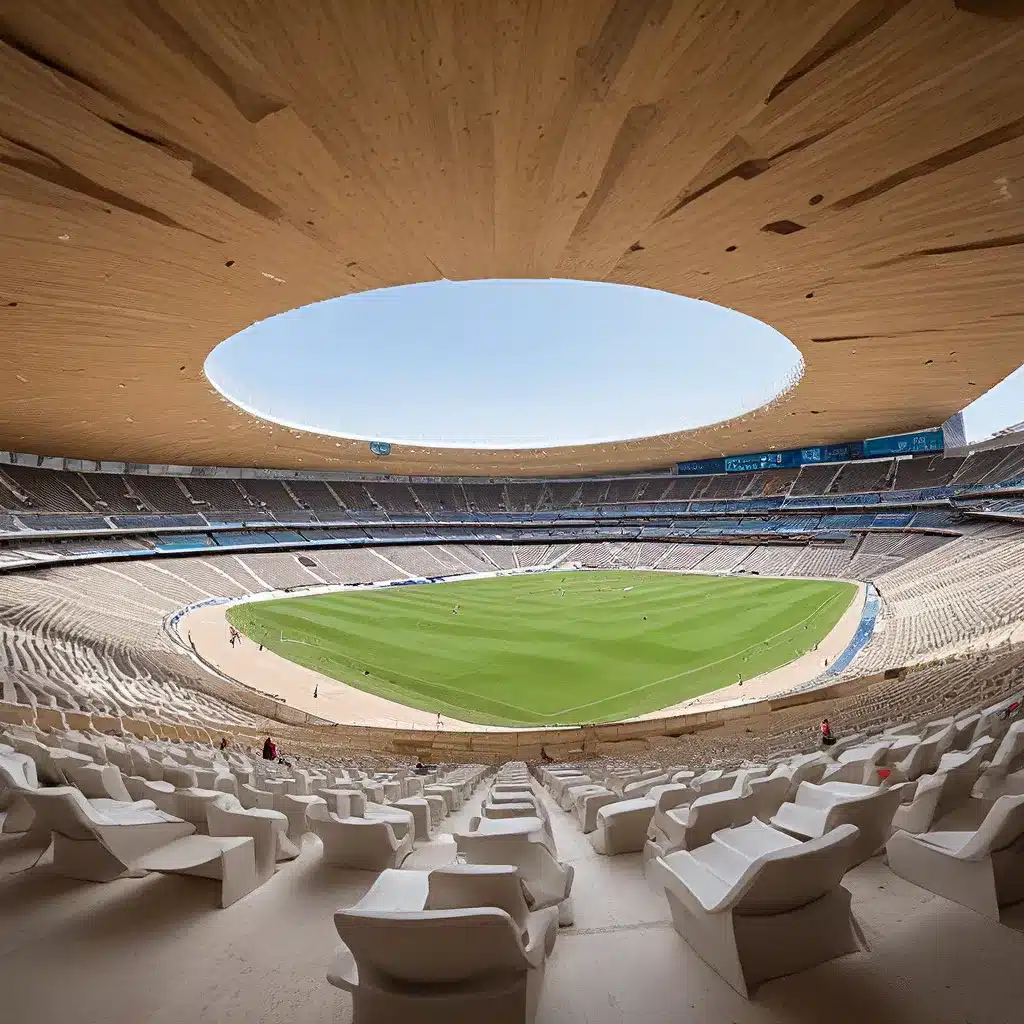
Nestled in the vibrant city of Montevideo, the Estadio Centenario stands as a testament to the rich sporting heritage and architectural prowess of Uruguay. This iconic stadium, with its majestic presence and storied past, has captivated soccer enthusiasts and admirers of architectural excellence from around the world.
The Historical Significance of the Estadio Centenario
The Estadio Centenario holds a special place in the annals of soccer history. Constructed in 1930 to commemorate the centennial of Uruguay’s first constitution, the stadium was chosen as the venue for the inaugural FIFA World Cup final, a momentous occasion that cemented its legacy as a true icon of the sport. On July 30, 1930, the Estadio Centenario played host to the historic match between Uruguay and Argentina, which ended in a 4-2 victory for the host nation, sending the Uruguayan fans into a frenzy and solidifying the stadium’s place in the hearts of soccer enthusiasts worldwide.
The stadium’s significance extends beyond its role in the first World Cup. It has witnessed countless other memorable sporting events, including the Copa América, the South American championship for national teams, and has been the proud home of the Uruguayan national football team, known as the Celeste, for decades. The Estadio Centenario has been the backdrop for numerous triumphs, heartbreaks, and legendary performances, cementing its status as a revered institution in the world of soccer.
The Architectural Splendor of the Estadio Centenario
The Estadio Centenario is not just a sports arena; it is an architectural masterpiece that seamlessly blends function and form. Designed by the renowned Uruguayan architect Juan Antonio Scasso, the stadium’s striking neo-colonial style and meticulously crafted details have captivated visitors and architecture enthusiasts alike.
One of the most distinctive features of the Estadio Centenario is its imposing facade, which features a grand entrance adorned with intricate stone carvings and a series of grand arches that create a sense of grandeur and inviting elegance. The stadium’s towering grandstands rise up on either side, creating an amphitheater-like atmosphere that envelops the playing field and enhances the spectator experience.
The stadium’s internal architecture is equally impressive, with a spacious and well-appointed concourse, comfortable seating, and a range of amenities that cater to the needs of both casual and passionate fans. The attention to detail is evident in the harmonious blending of modern conveniences and the preservation of the stadium’s historic charm.
Estadio Centenario’s architectural significance extends beyond its role as a sports venue; it is a cultural landmark that has become an integral part of Montevideo’s urban landscape and a source of immense civic pride for the Uruguayan people.
Exploring the Stadium’s Iconic Features
The Estadio Centenario is a multifaceted venue that offers visitors a wealth of opportunities to explore its rich history and architectural splendor. From guided tours that delve into the stadium’s past to interactive exhibits that showcase its role in the world of soccer, there is something for every visitor to discover.
One of the most popular attractions within the Estadio Centenario is its museum, which chronicles the venue’s illustrious history through a captivating collection of memorabilia, photographs, and interactive displays. Visitors can immerse themselves in the stories of legendary matches, relive the fervor of the inaugural World Cup, and gain a deeper appreciation for the stadium’s enduring significance in the world of sports.
Another must-see feature of the Estadio Centenario is its panoramic viewing platform, which offers visitors breathtaking vistas of the playing field and the surrounding cityscape. From this vantage point, visitors can appreciate the sheer scale and grandeur of the stadium, as well as the architectural details that make it such a unique and captivating structure.
For those seeking a more hands-on experience, the Estadio Centenario also offers guided tours that take visitors behind the scenes, allowing them to explore the players’ locker rooms, walk the tunnel that leads to the pitch, and even step onto the hallowed turf where generations of soccer greats have left their mark.
The Estadio Centenario’s Ongoing Legacy
The Estadio Centenario’s legacy extends far beyond its role as a sports venue; it is a symbol of Uruguayan pride, a testament to the country’s architectural prowess, and a living link to the rich history of the world’s most beloved sport.
As Montevideo continues to evolve and modernize, the Estadio Centenario remains a steadfast anchor of the city’s cultural identity, a constant reminder of the country’s sporting heritage and the enduring power of architecture to inspire and captivate.
Today, the stadium continues to draw visitors from around the world, who come to marvel at its timeless beauty, immerse themselves in its storied past, and connect with the passion and pride that imbue every inch of this architectural masterpiece. Whether you’re a soccer enthusiast, an architecture aficionado, or simply a curious traveler, the Estadio Centenario is a must-visit destination that promises to leave a lasting impression.
As you explore the Estadio Centenario, you’ll uncover the rich tapestry of Uruguayan culture, history, and passion for the beautiful game. From the grand entrance to the intimate spectator experience, every aspect of this iconic stadium invites you to step into the heart of a nation’s sporting legacy and to be a part of its enduring story.

